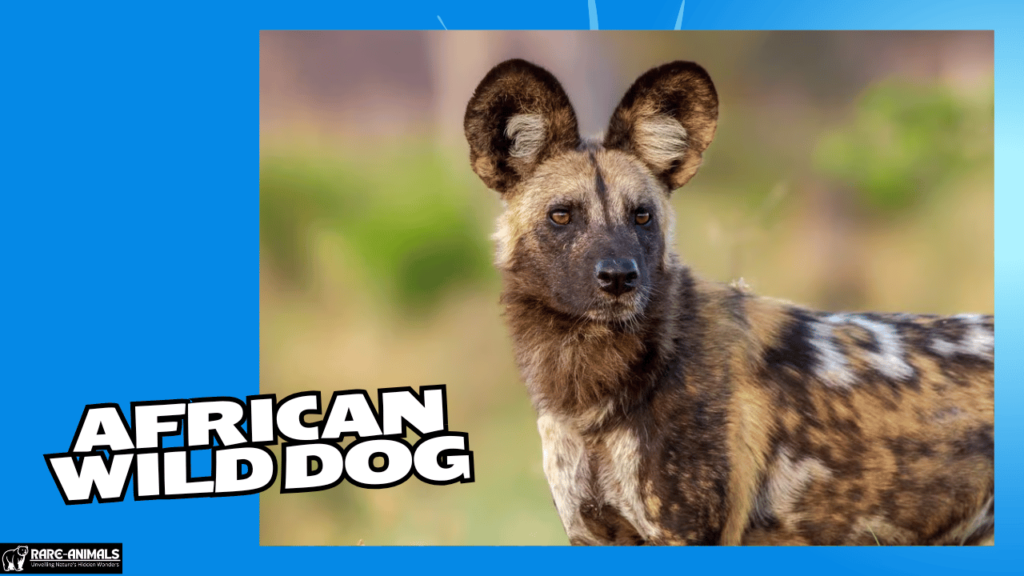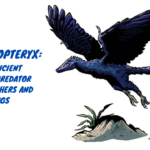The African wild dog (Lycaon pictus), often called the “painted dog” for its distinctive, colorful coat, is one of Africa’s most fascinating and endangered predators. Renowned for their exceptional teamwork and hunting prowess, these remarkable animals embody the untamed spirit of the African savanna.
This article explores their unique characteristics, behavior, and conservation challenges, providing a comprehensive look into their world.
What Is the African Wild Dog?
African wild dogs are social carnivores found in sub-Saharan Africa. Known for their unmatched hunting success rates, they play a critical role in maintaining the ecological balance of their habitats.
Physical Characteristics
- Appearance: Their coats are a patchwork of black, yellow, white, and brown, with no two individuals sharing the same pattern.
- Size: Adults stand about 30 inches tall at the shoulder and weigh between 40-70 pounds.
- Adaptations: Large, rounded ears enhance their hearing and help regulate body temperature in hot climates.
Social Structure
- Packs: Highly social animals, they live in packs of 6-20 individuals, led by a dominant breeding pair.
- Cooperation: Packs work together to hunt, raise pups, and defend their territory.
- Communication: Vocalizations, body language, and even synchronized movements help them coordinate.
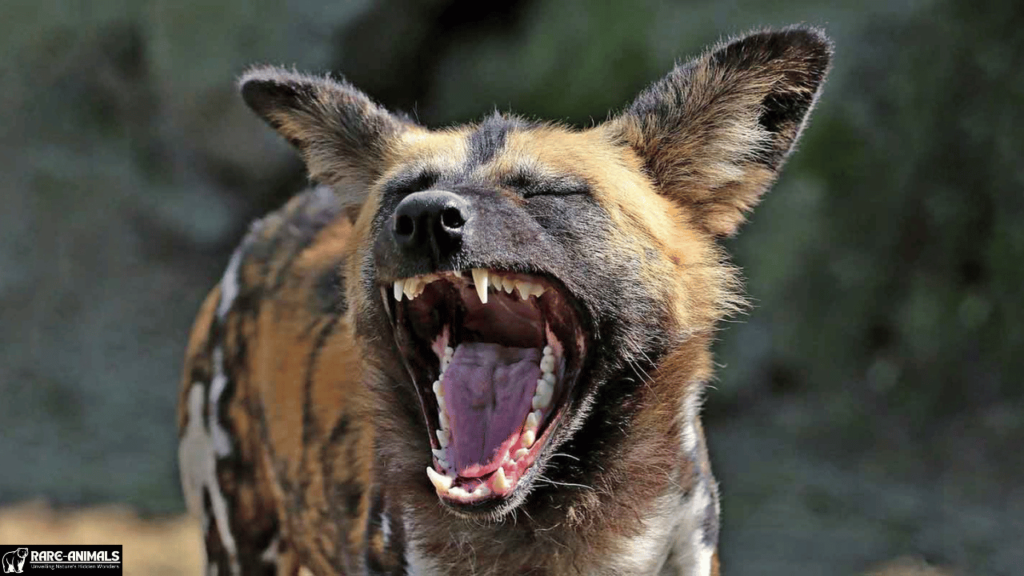
Hunting and Diet
The African wild dog’s hunting strategy sets it apart from other predators. Their success rate—as high as 80%—is unrivaled among large carnivores.
Hunting Techniques
- Endurance Hunting: Their lean, muscular bodies are built for long-distance chases, often covering several miles.
- Teamwork: They employ strategic tactics to isolate and exhaust prey.
- Prey Selection: Common targets include impalas, gazelles, and wildebeest calves.
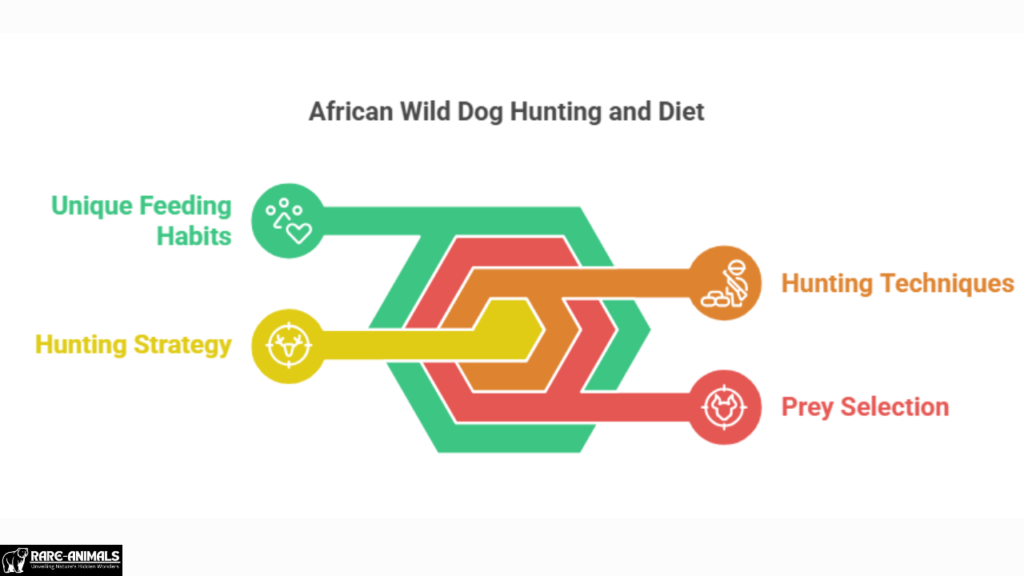
Unique Feeding Habits
- Food Sharing: After a kill, adults regurgitate food for pups and injured pack members.
- Role Distribution: Some dogs guard the kill while others eat, ensuring safety from scavengers.
Habitat and Range
African wild dogs are highly adaptable, inhabiting various ecosystems from savannas to woodlands. However, their range has drastically declined due to human activities.
Current Distribution
- Countries: Found primarily in Botswana, Tanzania, Zimbabwe, and South Africa.
- Habitat Requirements: Thrive in open areas with abundant prey and minimal human disturbance.
Threats to Habitat
- Human Encroachment: Agricultural expansion and urbanization reduce available land.
- Conflict with Humans: They are often killed in retaliation for livestock predation.
- Fragmentation: Roads and fences disrupt their migratory and hunting patterns.
Conservation Efforts
Protecting African wild dogs is crucial for biodiversity and ecosystem health. Conservation organizations and governments are working together to address the threats they face.
Key Initiatives
- Protected Areas: Establishing and maintaining national parks and reserves.
- Community Engagement: Educating local communities on coexistence strategies.
- Anti-Poaching Measures: Reducing snaring and other illegal activities.
- Research and Monitoring: Tracking populations to inform conservation policies.
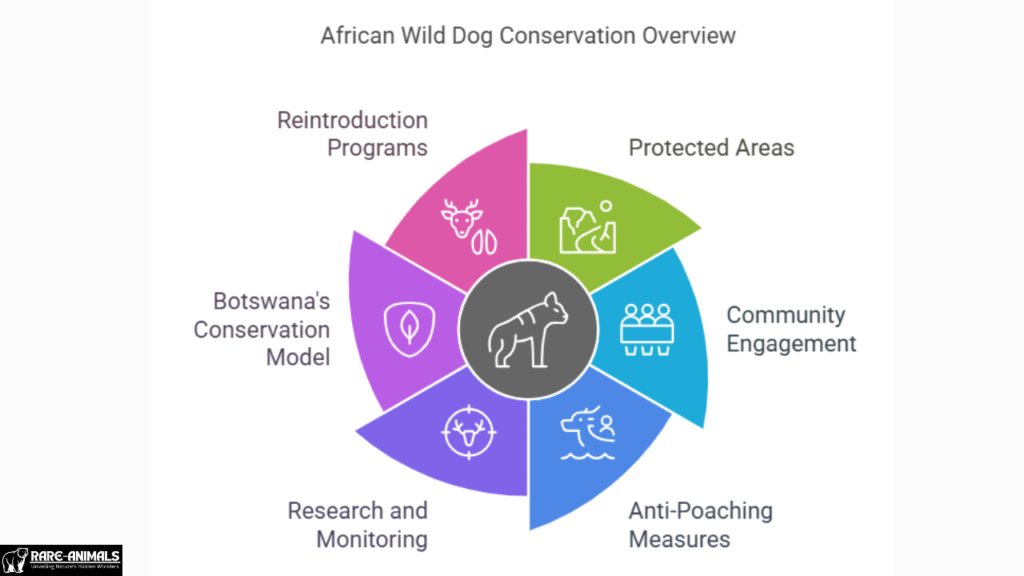
Success Stories
- Botswana’s Conservation Model: Community-driven efforts have significantly increased wild dog populations.
- Reintroduction Programs: Successful reintroductions in South Africa’s protected reserves.
FAQs
1. Are African wild dogs endangered?
Yes, they are classified as “Endangered” by the IUCN, with fewer than 7,000 individuals remaining in the wild.
2. How can I help protect African wild dogs?
Support organizations like the African Wildlife Foundation, avoid products linked to habitat destruction, and promote awareness about their plight.
3. What makes their hunting strategy unique?
Their reliance on endurance, teamwork, and strategic coordination results in unmatched hunting success rates.
4. Can African wild dogs be seen in the wild?
Yes, safaris in countries like Botswana and Tanzania offer opportunities to observe them in their natural habitats.
5. Why are they called “painted dogs”?
Their multicolored coats, resembling brushstrokes, give rise to this nickname.
Conclusion
The African wild dog is a vital part of Africa’s ecosystems, representing the resilience and beauty of nature. Despite facing numerous threats, conservation efforts provide hope for their future.
Learn more about the African wild dog and how you can support conservation efforts by visiting trusted organizations or participating in eco-tourism initiatives. Together, we can ensure these painted hunters continue to roam the savannas.

Alveena is an experienced content writer with a knack for crafting engaging and insightful pieces. She thrives on breaking down complex ideas and presenting them as clear, captivating content that resonates with readers.

